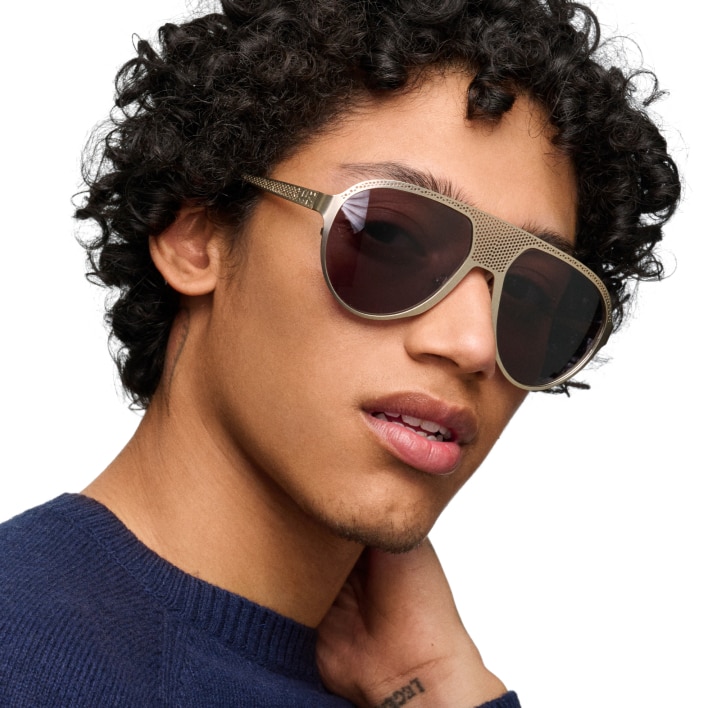In the EBD Blog
Reviewed by Sonia Kelley, OD, MS on November 3, 2023
Photokeratitis — sometimes called ultraviolet or UV keratitis — is an eye condition caused by exposure to ultraviolet (UV) rays. Both natural and artificial UV light can cause photokeratitis.
The condition is painful and is often referred to as an eye sunburn. When you’re exposed to harsh UV radiation, it can affect different parts of your eyes. This includes the cornea — the clear front layer of the eye — and the conjunctiva — the thin membrane that covers the white of your eye and your inner eyelid.
What Causes Photokeratitis?
Exposure to UV rays can damage your eyes, sometimes resulting in photokeratitis. There are many ways you can be exposed to these harmful rays, both in natural and artificial environments.
You may be exposed to UV radiation from the following natural sources:
- Sunlight
- Reflections of sunlight from cement, ice, water, sand, or snow
- Viewing a solar eclipse without proper eye protection
- Lightning
When photokeratitis is caused by a reflection of light from snow or ice, it’s called snow blindness. This is a common type of photokeratitis seen in regions with high altitudes or areas such as the North and South Pole.
Artificial UV exposure may come from:
- Tanning beds or lamps
- Photography floodlights
- Halogen lamps
- Lasers
- Arc welding
In cases caused by welding exposure, the condition is also called welder’s eye or arc eye.
Symptoms of Photokeratitis
Photokeratitis is often a painful condition, though discomfort may not start immediately after UV exposure. When symptoms do set in, you may experience any of the following:
- Eye pain
- Watery eyes
- Red eyes
- Eye swelling
- Light sensitivity (photophobia)
- Seeing halos
- Grittiness or a feeling that something is in your eye
- Headaches
- Twitching eyelids
- Blurred vision
While rare, temporary vision loss or a change in your color vision can occur. The severity of your symptoms may vary depending on how long you were exposed to the UV radiation and how much damage occurred.
Photokeratitis Treatment
Treatment for photokeratitis is primarily focused on relieving symptoms, as the condition itself usually resolves on its own within a few days. If you suspect you may have photokeratitis, see your eye doctor. They will assess any damage and advise you on treatment options.
Your eye doctor may recommend the following techniques to help relieve your symptoms:
- Remove your contact lenses if you’re wearing them
- Sit (or lie down) in a dark room
- Avoid sunlight and artificial UV light
- Take over-the-counter pain relievers as needed
- Use artificial tears to ease dryness and discomfort
- Place a cool washcloth over your closed eyes
- Avoid touching and rubbing your eyes
Depending on your case, your doctor may also prescribe a topical ointment or antibiotics.
How Long Does Photokeratitis Last?
Fortunately, photokeratitis is temporary. For most people, symptoms last between six and 24 hours after UV exposure has occurred, but some people experience symptoms for several days. It all depends on the length and severity of UV exposure.
That being said, long-term exposure to UV radiation can increase your risk of developing serious eye conditions such as cataracts and macular degeneration. Looking at the sun directly can also lead to retinal damage. If you plan on observing a solar eclipse, it’s critical to wear solar eclipse viewing glasses approved by the American Astronomical Society.
Photokeratitis Prevention
The best way to prevent photokeratitis is to avoid exposure to harmful UV radiation. This is achievable in several ways:
- Wear sunglasses that provide 100% UVA-UVB protection.
- Avoid looking directly at or into natural or artificial UV light sources.
- Consider a pair of wraparound sunglasses for long-lasting outdoor activities.
- Try polarized sunglasses for UV protection and increased clarity in bright conditions with high levels of glare.
- If you’re spending a day on the ski slopes, invest in a pair of snow goggles that protect against UV rays.
- If you’re a welder, wear a helmet with a full-face shield while you work.
- Wear the designated goggles when using a tanning bed.
- Use proper protection to view a solar eclipse. Never look directly at a solar eclipse without the appropriate protection.
Eye protection should always be a priority. Don’t hesitate to call your eye doctor if your photokeratitis symptoms change, worsen or last longer than 48 hours.

















